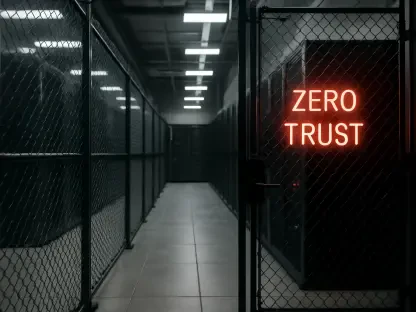I’m thrilled to sit down with Matilda Bailey, a renowned networking specialist with deep expertise in the latest technologies and trends in cellular, wireless, and next-gen solutions. With her extensive background, Matilda is uniquely positioned to shed light on a pressing cybersecurity issue: a global USB malware campaign spreading a cryptominer. In our conversation, we dive into the mechanics of this multi-stage attack, the dangers of cryptomining, the reasons behind its widespread impact, and practical strategies for organizations to protect themselves. Let’s explore how this persistent threat continues to challenge security measures even in 2025.
How did this USB malware campaign first come to light, and what makes it such a significant concern in today’s cybersecurity landscape?
This campaign was uncovered by a dedicated team of analysts working in managed detection and response. They identified a sophisticated attack being spread through infected USB drives, which is particularly alarming because it shows how even a simple, everyday device can become a gateway for serious threats. What makes this a big deal is its global reach and persistence into 2025, targeting both individuals and organizations with a cryptominer. It’s a reminder that old-school attack vectors like USBs are still incredibly effective, especially when paired with advanced tactics to bypass modern security controls.
Can you break down how this malware actually works once a USB is plugged into a system?
Absolutely. It starts with a hidden Visual Basic script on the USB drive. When someone plugs it in and interacts with the device, the script kicks off a multi-stage attack. It uses legitimate system tools like xcopy.exe to copy malicious files into critical directories, such as Windows System32. From there, it employs a technique called DLL search order hijacking, which tricks the system into loading a malicious library file instead of a legitimate one. This ultimately paves the way for downloading and installing a cryptominer, all while trying to stay under the radar of security software.
What exactly is a cryptominer, and why should the average person or business care about it being installed on their systems?
A cryptominer is a type of malware that hijacks a computer’s resources to mine cryptocurrency, like Bitcoin or Monero, for the attacker’s benefit. For the average person or business, this means your device slows down significantly—think lagging apps, overheating, and higher energy bills—because the malware is using your processing power. Beyond that, it’s a sign that your system has been compromised, which could lead to other risks like data theft or further infections. For businesses, this can disrupt operations and lead to costly downtime.
Why do you think cybercriminals are so focused on cryptomining as a goal for attacks like this?
Cryptomining is attractive to cybercriminals because it’s essentially a way to turn compromised devices into cash machines. Mining cryptocurrency generates direct profit for them without the need to negotiate ransoms or sell stolen data on the dark web, which can be riskier and more complex. Plus, it’s often harder for victims to notice right away compared to something like ransomware, allowing the malware to run in the background for longer and maximize earnings for the attackers.
This campaign has been linked to an earlier scheme called “Universal Mining.” Can you tell us more about that connection and what it reveals about the attackers’ strategies?
“Universal Mining” was a cryptocurrency mining scheme flagged by cybersecurity authorities in Azerbaijan back in 2024. It shared similar tactics with this USB campaign, such as exploiting removable media and using obfuscated scripts to deploy miners. The connection suggests that the attackers might be part of a larger, organized network reusing proven methods, or they’re drawing inspiration from past campaigns. It highlights a trend where cybercriminals iterate on successful techniques, adapting them to new environments while targeting a global audience.
The attack has spread across multiple continents. What factors do you think contribute to its wide geographical footprint?
The global spread is largely due to the universal use of USB drives. They’re cheap, portable, and often shared between individuals and organizations without much thought. People use them to transfer files at work, school, or home, and that behavior crosses borders easily. Additionally, not every region has the same level of cybersecurity awareness or access to advanced defenses, so some areas become easier targets. The lack of strict controls around removable media in many places just amplifies the problem.
Even in mid-2025, USB-based attacks remain a persistent issue. What do you see as the biggest challenges in stopping these kinds of threats?
One major challenge is human behavior—people trust USB drives because they’re so common, and they don’t always think twice before plugging one in. On the technical side, these attacks often use legitimate system processes to blend in, making them harder to detect without sophisticated tools. There’s also the issue of legacy systems or outdated policies in many organizations that haven’t adapted to block autorun features or restrict USB access. Balancing usability with security is tricky, and until that gap is closed, these threats will persist.
What practical steps can organizations take to protect themselves from USB malware campaigns like this one?
Organizations need to start with the basics: disable autorun and autoplay features on all systems to prevent automatic execution of malicious scripts. Implementing device control policies to block unsigned executables from running off USBs is another key step. Hardening endpoint security with tools that can detect hidden scripts is critical, as is protecting sensitive processes from being exploited. Physical measures, like restricting or locking USB ports, can also help. Finally, training staff to recognize the risks of unknown devices and enforcing strict policies around removable media can make a huge difference.
Looking ahead, what is your forecast for the evolution of USB-based malware threats in the coming years?
I expect USB-based threats to remain a challenge, especially as attackers continue to combine them with more advanced evasion techniques. We might see these campaigns evolve to target specific industries or leverage emerging technologies to spread faster. However, as awareness grows and more organizations adopt stricter controls, the effectiveness of these attacks could diminish—but only if we prioritize education and proactive defenses. The cat-and-mouse game between attackers and defenders will continue, and staying ahead will require constant vigilance and adaptation.









